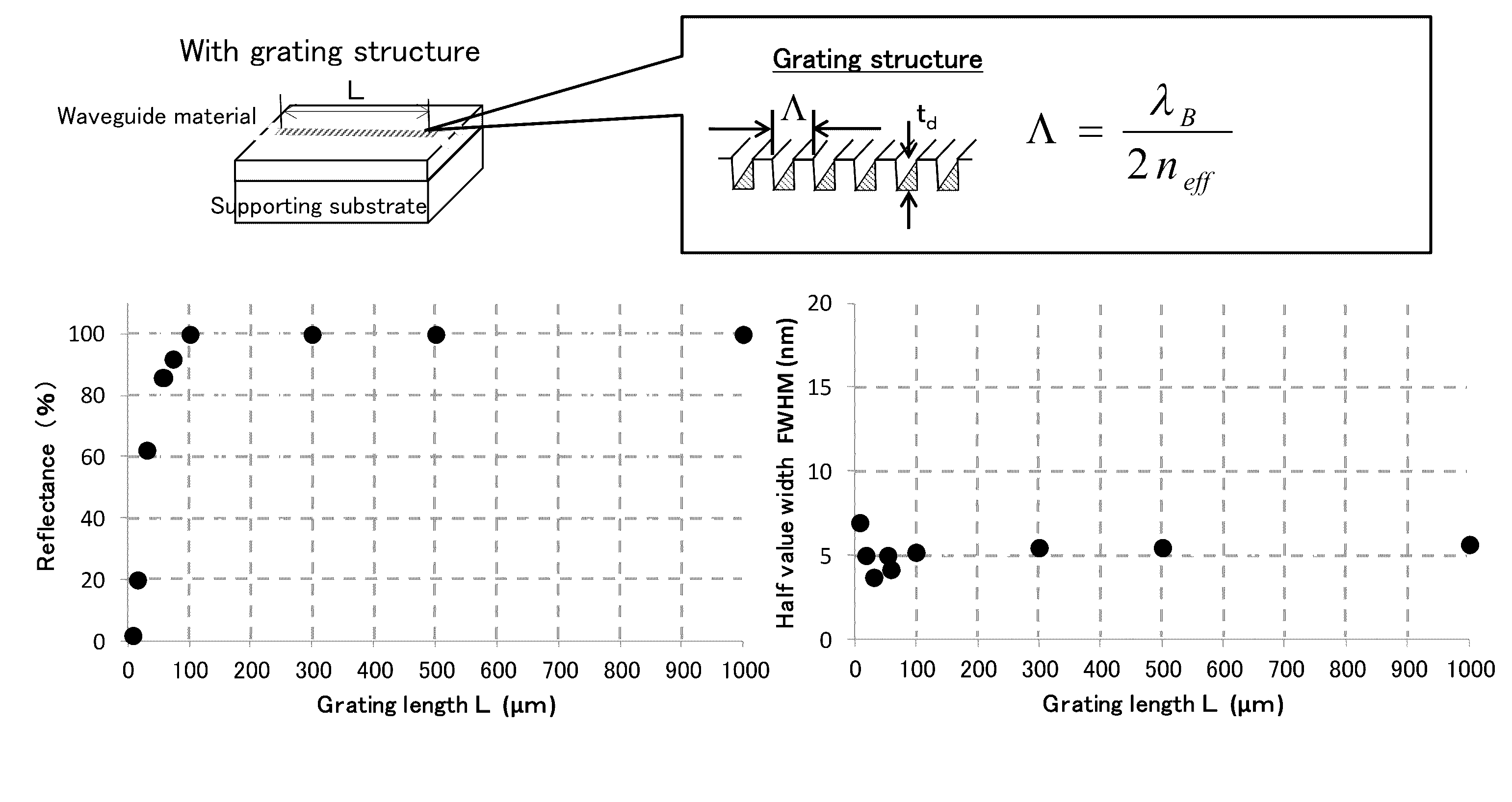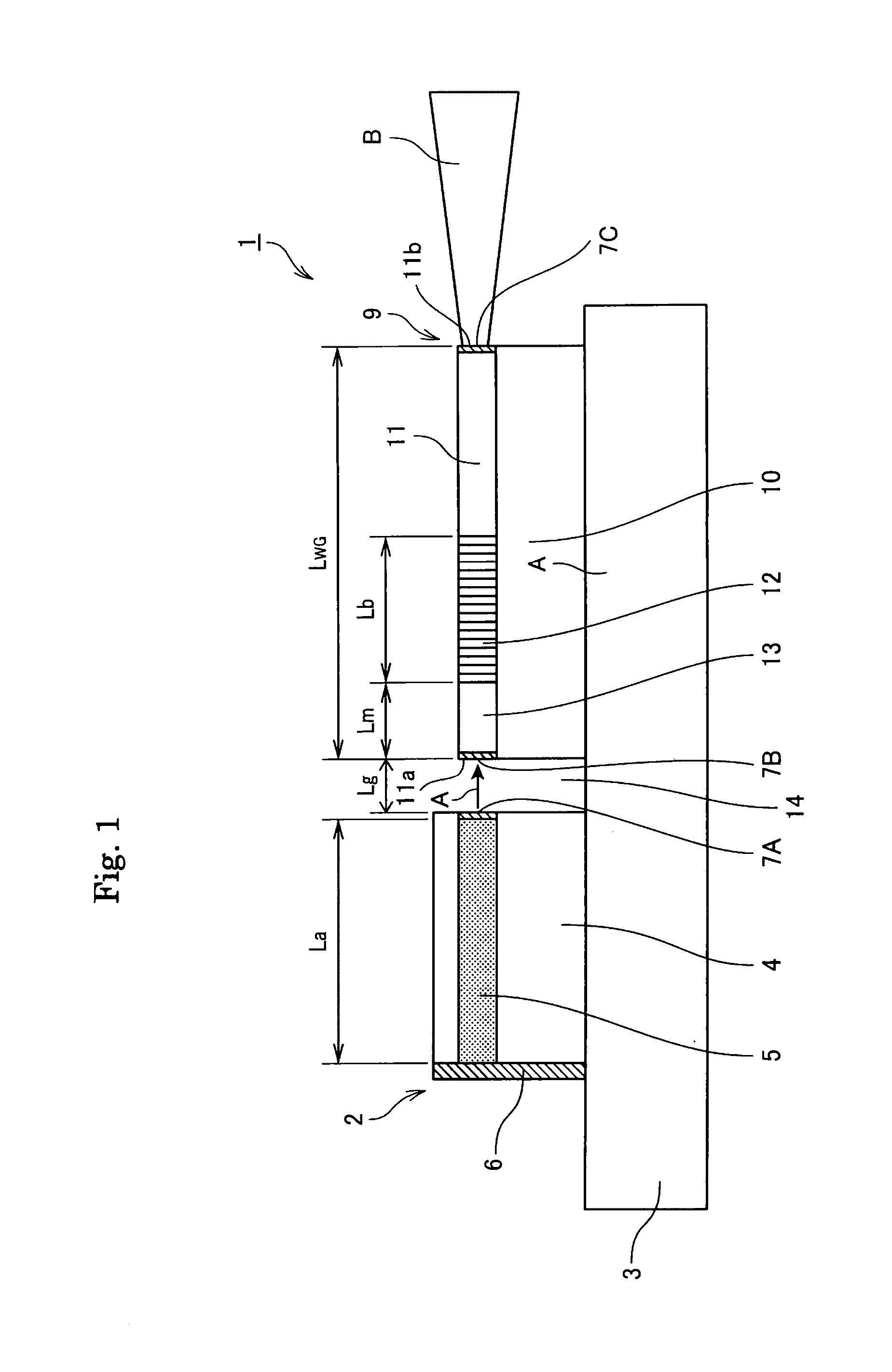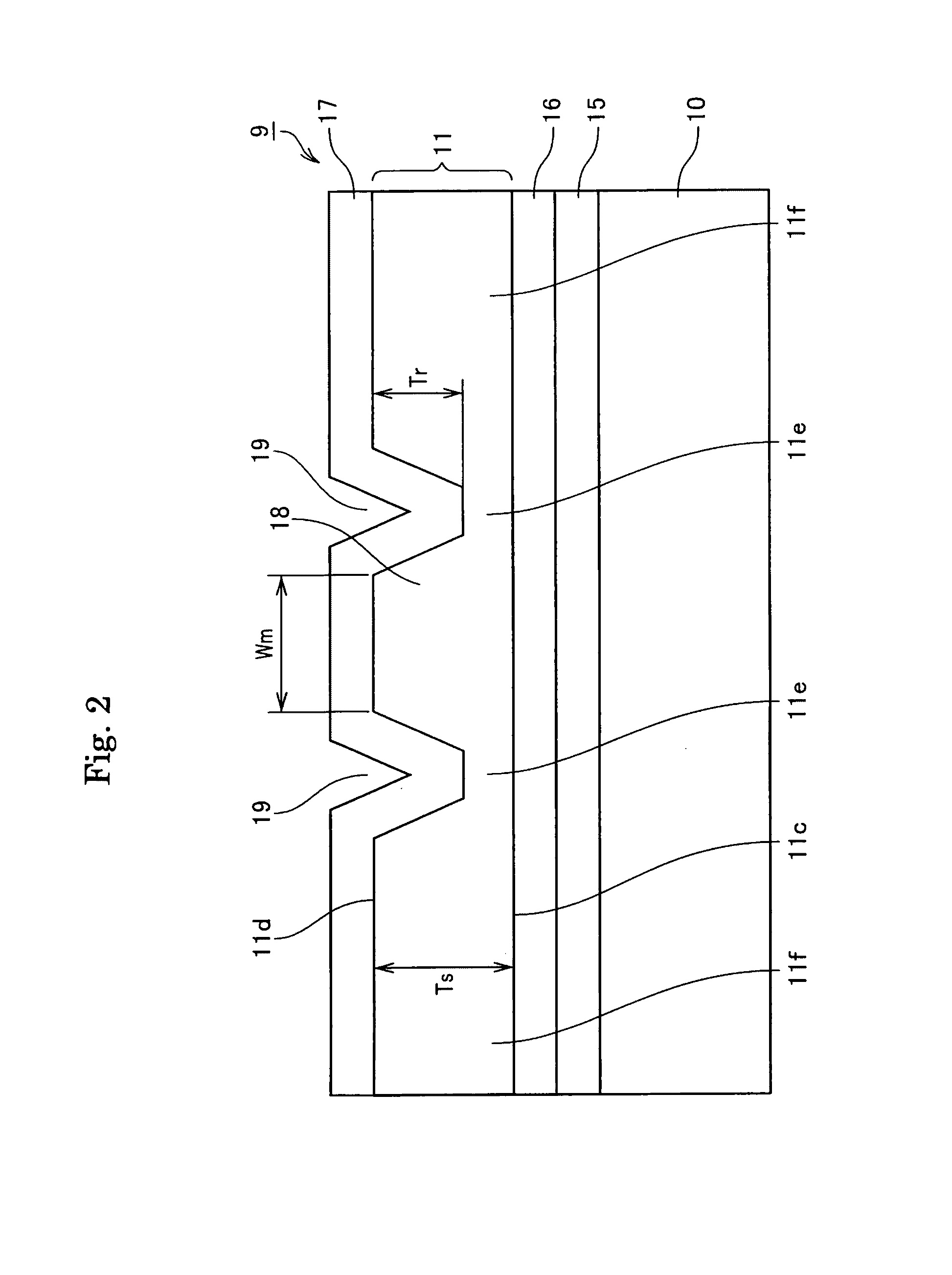Grating Element and External-Resonator-Type Light Emitting Device
- Summary
- Abstract
- Description
- Claims
- Application Information
AI Technical Summary
Benefits of technology
Problems solved by technology
Method used
Image
Examples
example 1
[0160]The device 9 as illustrated in FIG. 1 and FIG. 2 was produced.
[0161]In particular, Ta2O5 was deposited at a thickness of 1.2 μm on a quartz substrate using a sputtering device to form a waveguide layer. Then, Ti was deposited on the Ta2O5, and a grating pattern was formed along the y-axis by photolithography. Then, grating grooves having a pitch spacing Λ of 232 nm and a length Lb of from 5 to 100 μm, 300 μm, 500 μm, or 1000 μm were formed using the Ti pattern as a mask by reactive ion etching with fluorine based gases. The grating had a groove depth td of 20, 40, 60, 100, 160, 200, or 350 nm. To form an optical waveguide that causes light to propagate along the y-axis, grooves having a width Wm of 3 μm and Tr of 0.5 μm were formed by reactive ion etching in a manner similar to the manner described above.
[0162]Then, the resultant was cut into bars using a dicing device. The both end faces were optically polished, and then an AR coating having a reflectance of 0.1% was coated o...
example 2
[0168]Ti was deposited on a substrate of z-cut lithium niobate crystal doped with MgO, and a grating pattern was formed along the y-axis by photolithography. Then, grating grooves having a pitch spacing Λ of 214 nm and a length Lb of 100 μm were formed using the Ti pattern as a mask by reactive ion etching with fluorine based gases. The grating had a groove depth of 20, 40, or 60 nm. To form an optical waveguide that causes light to propagate along the y-axis, grooves were formed in the grating by eximer laser so as to provide a width Wm of 3 μm and Tr of 0.5 μm. On the surface having the grooves formed therein, a buffer layer 16 of SiO2 was deposited at a thickness of 0.5 μm using a sputtering device. A black LN substrate, which was used as a support substrate, was bonded to the surface having the grating formed thereon.
[0169]Then, the resultant was attached to a polishing surface plate with the black LN substrate facing the surface plate, and the back side of the LN substrate havi...
example 3
[0175]Ti was deposited on a y-cut lithium niobate crystal substrate doped with MgO, and a grating pattern was formed along the x-axis by photolithography. Then, grating grooves having a pitch spacing Λ of 224 nm and a length Lb of 100 μm were formed using the Ti pattern as a mask by reactive ion etching with fluorine based gases. The grating had a groove depth of 20, 40, or 60 nm. To form an optical waveguide that causes light to propagate along the x-axis, grooves were formed in the grating by eximer laser so as to provide a width Wm of 3 μm and Tr of 0.5 μm. And on the surface having the grooves formed therein, a buffer layer 16 of SiO2 was deposited at a thickness of 0.5 μm using a sputtering device. A black LN substrate, which was used as a support substrate, was bonded to the surface having the grating formed thereon.
[0176]Then, the resultant was attached to a polishing platen with the black LN substrate facing the platen, and the back side of the LN substrate having the gratin...
PUM
 Login to View More
Login to View More Abstract
Description
Claims
Application Information
 Login to View More
Login to View More - R&D
- Intellectual Property
- Life Sciences
- Materials
- Tech Scout
- Unparalleled Data Quality
- Higher Quality Content
- 60% Fewer Hallucinations
Browse by: Latest US Patents, China's latest patents, Technical Efficacy Thesaurus, Application Domain, Technology Topic, Popular Technical Reports.
© 2025 PatSnap. All rights reserved.Legal|Privacy policy|Modern Slavery Act Transparency Statement|Sitemap|About US| Contact US: help@patsnap.com



